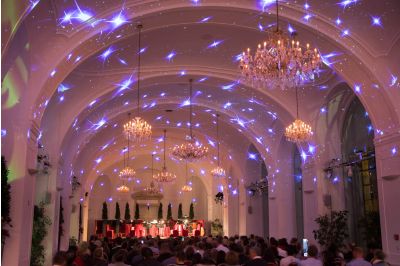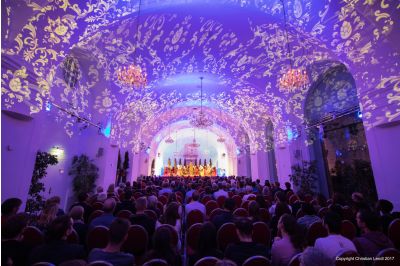Schönbrunn Palace: a stroll through imperial history and classical music
Baroque splendor, majestic grandeur, a nature experience and an incomparable view over Vienna - Schönbrunn Palace is not without reason the visitor magnet of Vienna. The former summer residence of the Habsburgs enchants today more than ever as a unity of palace, park and zoo and invites you to discover and linger.
The original hunting lodge was completely destroyed during the Turkish Wars and later plans to build a replica of Versailles were never realized due to lack of funds. However, it turned out certainly not as an improvised solution; today, with its 1441 rooms, it is the largest castle in Austria, which served as an imperial summer residence until the 20th century and was declared a UNECSO World Heritage Site as early as 1996.
For many years history was written in Schönbrunn Palace: Maria Theresa held secret conferences there, Napoleon negotiated and the Peace Treaties between Prussia, France and Austria were signed in one of the palace's magnificent halls, Emperor Charles signed his abdication there, and Federal President Adolf Schärf hosted gala dinners at the palace for John F. Kennedy and Nikita Khrushchev, during the Cold War.
There are many sights to discover in the hugely imposing grounds, including the Gloriette, which bears witness to past splendor, the Neptune Fountain, the Obelisk Fountain and a replica of a Roman ruin.
The Orangery invites friends of classical music to other unforgettable experiences. Originally built as a greenhouse for the botanical garden, it served as a venue for unusual events, receptions and theatrical performances already in imperial times. It was here that the famous contest between Wolfgang Amadeus Mozart and Antonie Salerie took place. The two composers were given the task by Emperor Joseph II to each write a short, one-act opera to be performed on two opposite stages.
The conditions of participation were not entirely unbiased: The opera "Der Schauspieldirektor" by the free artist and outsider Mozart was performed as a prelude, followed by the double-length piece "Prima la musica e poi le parole," by the respected and established court Kapellmeister Salerie, who received double the fee for it, in accordance with his performance. While the emperor had wanted to raise the prestige of the German Singspiel through the composer's competition, the public was enthusiastic about Salieri's very compact Italian opera buffa, which subsequently became a huge success.
Since the Orangery's resurrection after renovation work in the 1980s, it has quickly re-established itself as an exclusive venue for exceptional musical events and concerts. Pieces by Wolfgang Amadeus Mozart and Johann Strauss, for example, are regularly performed, and many special events with pieces by other great masters take place. Especially during the Advent and Christmas season there is a wide variety of music by different composers.
Please be aware that Schönbrunn Palace is one of the most popular sights in Vienna and can be very crowded. We therefore recommend that you book your tickets and concert tickets well in advance.


